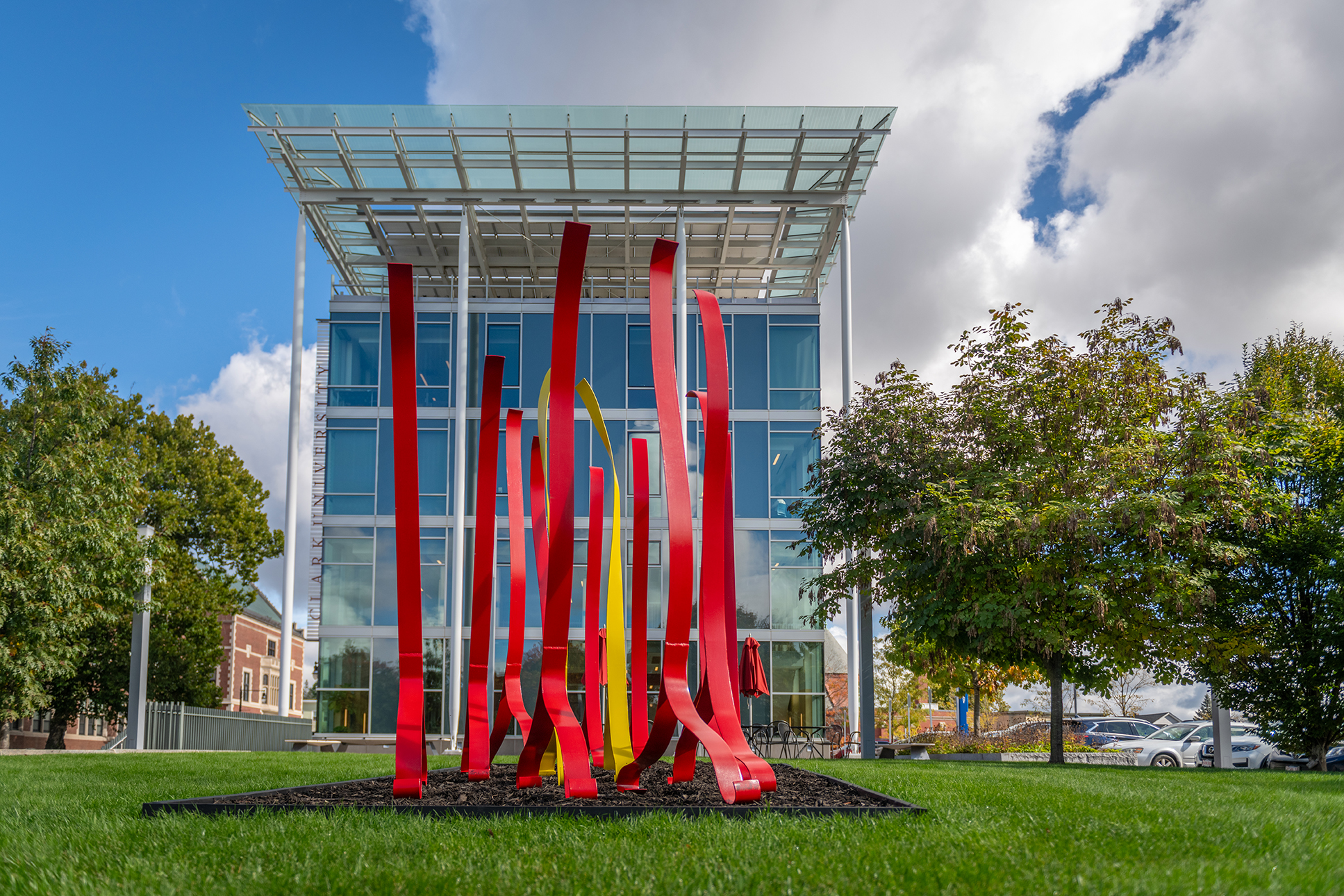‘I look at public art as gateway art’

For Philip Marshall, MBA ’93, creativity has been a key component of his whole career. During his work in international business and as a crisis management consultant, he enjoyed visiting many large cities including Tokyo, especially the ward of Shinjuku, the teeming commercial and government district and busiest railway hub. There, he would be immersed among the tens of thousands of business professionals dressed in dark-colored attire making their daily work pilgrimages, surging into the office towers or disappearing beneath the streets to reach the trains. Viewed from a comfortable distance, they seemed to move in unison, almost as a single organism, faithfully obeying the rules of pedestrian etiquette.
But Marshall noticed something else up close: The crowd was no monolith. The individuals were navigating their distinct personal journeys amid this human torrent by calculating the polite maneuvers needed to most efficiently reach their destinations. Now and then, he noticed, two individuals would exchange brief glances as they passed one another — a fleeting mutual acknowledgment that, perhaps, hardly registered for either of them, but which occurred nonetheless.
When he retired in 2010 to devote himself to sculpting full time, Marshall drew inspiration from his Tokyo experience to create “Chance Encounter,” a piece that was installed last fall as part of the Art in the Heart of Main South exhibition. This collaboration between Clark and Art in the Park has brought original works of art to campus and to University Park to enrich common spaces, build community, and add an element of aesthetic surprise to the landscape.
“Chance Encounter” is located on the green that bridges the Shaich Family Alumni and Student Engagement Center to University Park. Using 10-foot-long, four-inch-wide thin strips of steel, Marshall has crafted 13 ribbon-like minimalist figures with “legs” carrying them along — seven of the figures striding one way, the other six setting out in the opposite direction. Even without discernible facial features, their posture betrays their intention to get somewhere quickly, an effect that’s amplified when the structures shimmy in the wind.
Eleven of the figures are painted red, but at the center are two yellow figures. They, too, appear to be in motion, but they twist slightly to face one another, as if to catch a glimpse before continuing on.
“It is quite satisfying to do this by hand,” Marshall says, describing the bending of the steel to achieve the “encounter” effect. “You’re changing the molecular structure, giving it new memory. There’s a nice flow to it.”
Marshall, a native of Kent, England, was a successful painter in his youth and had aspirations of becoming a full-time artist, but opted to study physics and mathematics at the University of Liverpool rather than attend art school. “I was concerned that as a professional artist, I would be painting Christmas cards for Hallmark my whole life,” he says.
He seldom painted while pursuing a full-time career in industry (which included earning an MBA from Clark), but after retiring, he returned to his art full time and “got sucked into the world of three-dimensional art” focusing his attention on outdoor sculpture.
Marshall, who shows his work across New England, particularly enjoys showcasing his pieces in outdoor public art installations.
“I look at public art as gateway art,” he says. “It allows people who would never dream of going to a gallery or museum to experience art, and maybe prompts them to become more interested.”

